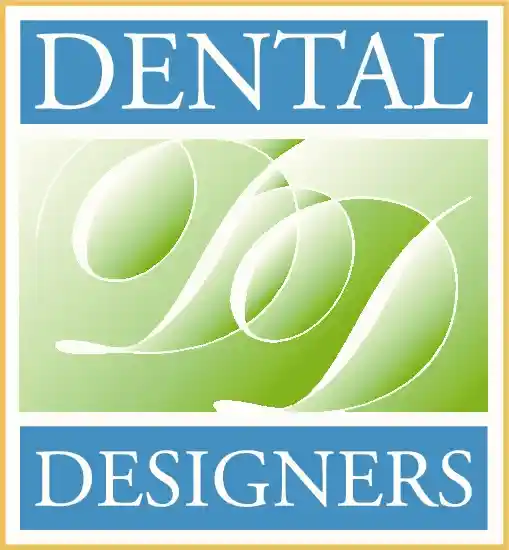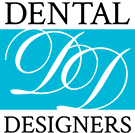How our Rockford Dentist Recommends to Brush Your Teeth

Introduction
In this article, our Rockford dental team will explain the key steps everyone should follow for thoroughly and effectively cleaning teeth at home. We will cover choosing the right toothbrush and toothpaste, brushing for the recommended length of time, using proper technique, and why regular dental exams are still essential even when brushing correctly. You can dramatically improve your oral hygiene by adopting these expert-recommended tips daily, along with professional care. Please continue reading for insights from our decades of dental experience so you can have your healthiest, most radiant smile.
Use a Soft-Bristled Toothbrush and Fluoride Toothpaste
Toothbrush Bristles Matter
The texture of your toothbrush bristles plays a crucial role in your brushing results. As your trusted Rockford dentists, we always advise using a soft-bristled toothbrush.
Understanding Bristle Textures
- Toothbrush bristles come in various textures – usually categorized as soft, medium, or hard. The bristle stiffness impacts how intensely it scrubs your teeth during brushing.
- Stiff brushes feature dense, rigid bristles, while soft brushes have gentle, pliable bristles. The texture you choose plays a vital role in cleaning power and safety.
Dangers of Stiff-Bristled Brushes
- While stiffer-bristled options clean better, they can damage tooth enamel and irritate sensitive gum tissue with excess pressure. Tiny cracks in the enamel exterior eventually allow decay-causing bacteria to penetrate deeper layers of teeth, causing irreversible destruction over time.
- Aggressive scrubbing of the gums can erode the thin tissue from the base of teeth through repetitive stress, exposing vulnerable root sections highly prone to decay and temperature sensitivities. This gradual recession is called periodontal disease – a leading cause of tooth loss in adults.
Benefits of Ultra-Soft Bristles
- Conversely, ultra-soft bristles minimize these risks while effectively removing plaque with proper technique. The flexible texture follows the natural contours of teeth, massaging gums gently without abrasion.
- For patients struggling with pre-existing enamel flaws or gum recession, soft brushes help prevent further progression without sacrificing hygiene.
Bristle Softness Recommendations
- As your trusted Rockford dentist, our team at Dental Designers agrees soft or extra-soft manual toothbrushes are optimal for balancing thorough plaque removal and oral tissue health preservation.
- Dental Designers also offer personalized guidance on finding the ideal brush texture and can assess your unique vulnerability levels at routine dental exams. Prioritize softness – you can maintain exceptional oral hygiene without damage with proper brushing motions.
Look for Toothpaste with Fluoride
Fluoride is a mineral that plays an essential part in keeping your teeth resilient to decay. It helps strengthen and remineralize enamel weakened by acid, rebuilding damage from sugary and acidic foods and drinks.
How Fluoride Protects Your Teeth
Fluoride is a safe, natural mineral that strengthens tooth enamel – the outer layer shielding teeth from decay-causing bacteria and acids. It prevents vulnerabilities in enamel that allow acids to permeate deeper layers of teeth, plus reduces plaque bacteria growth itself. Fluoride works in multiple ways to minimize cavities.
Strengthening Enamel Against Acid Attacks
Tiny amounts of fluoride help redeposit dissolved minerals into enamel micro-spaces eroded by acidic foods and plaque acid. This ramps up enamel’s resilience and physical integrity despite ongoing acid challenges from daily diet and bacteria. Fluoride makes the enamel exterior more impervious to acid penetration.
Brush for 2 Minutes Twice Per Day
It takes more than a quick once-over to remove plaque and bacteria from your teeth thoroughly. Our Rockford dentistry advises brushing for 2 minutes twice daily – after breakfast and before bed.
Why Brushing Duration Matters
- While proper technique is critical, the total time you brush also significantly removes cavity-causing bacteria. Most people brush for 30-60 seconds at best. However, it takes 2 minutes of brushing to clear away plaque forming on all tooth surfaces adequately.
- The average person must realize it to clean less than 50% of their mouth surfaces by rushing their brushing routine. Yet going the full 2 minutes can remove more bacteria and debris hiding in tiny grooves and narrow spaces between teeth.
Hitting the 2-Minute Mark
To ensure you meet the recommended duration, use the clock or set a 2-minute timer on your phone. As an easy alternative, find a favorite song for 2 minutes and play it every time you brush your teeth. Musical motivation will help the time pass quickly.
Consistent 2-Minute Sessions
- As your local Rockford dentist, two full minutes of attentive brushing twice daily is optimal for drastically lowering cavity and gum disease risks between dental visits.
- Over months and years of daily brushing, those four total minutes will translate to hundreds of hours of vastly improved plaque control – and a much healthier, vibrant smile over the long run.
The next time your brushing seems tedious, remember missing even a few days can allow colonies of bacteria to thrive, raising the chances of tooth decay. Sticking with attentive, 2-minute sessions twice a day delivers outstanding preventive dividends.
Proper Brushing Technique
When it comes to technique, use short, gentle strokes, holding the brush at a 45-degree angle to your gums.
Angle and Pressure
Why the 45-Degree Brush Angle Matters
- Positioning your toothbrush at a 45-degree angle lets the bristles clean multiple exposed tooth surfaces simultaneously. The broader outer cheeks and tighter inner aspects face the bristles at this angle—maximizing efficient cleaning motions.
- It also avoids excess pressure on any singular zone that could lead to eventual enamel erosion. Straight-on scrubbing focuses force narrowly, concentrating significant stress on tiny surface areas with each stroke. The indirect 45-degree approach vastly distributes force.
Let Gravity and Gentle Motions Guide Pressure
- Gripping tightly and scrubbing hard often feels satisfying but can undermine oral health. Light pressure allows bristles to flex and adapt to intricate textures rather than forcibly jamming rigidly.
- Instead, use gentle wrist turns and fluent motions to guide the brush around teeth, letting the handle’s weight provide gliding force. Gravity gives bristles the variable tension needed to remove plaque yet prevents any singular zone from getting scraped raw over months and years.
Preventing Cumulative Damage
- While occasional firm scrubbing likely causes no significant damage, habitually vigorously brushing certain zones can destroy enamel or erode gums away gradually. Missing chunks of enamel expose teeth’s sensitive lower layers, causing issues like temperature sensitivity when eating hot or cold foods.
- Receding gums also progressively expose vulnerable root segments to decay at alarming rates. Catching yourself when accidentally scrubbing too intensely helps ensure your smile stays healthy long-term. The 45-degree angle sets the stage for a controlled, safe technique.
Systematic Motions
- Work methodically around the mouth to ensure complete coverage. Dividing the spaces into quadrants or sextants helps ensure no zone gets missed. Follow the natural tooth order and contours as you circle each area, directing bristles into hard-to-see crevices.
- Be attentive to angled chewing surfaces, delicate sides and backs of teeth, and critical gumline areas. Rotating wrist motions allows accessing nooks easily missed by back-and-forth scrubbing alone.
Inside Surfaces Too
While outer enamel surfaces get more attention, over 50% of cavities start on hidden inside aspects against the tongue and cheeks. Tilt brush vertically to scrub these vulnerable yet often neglected zones above and below the gumlines.
Massage All Gum Margins
A leading cause of adult tooth loss is receding gums that expose the tooth roots underneath. Take time to gently massage all gum margins to stimulate blood flow and clear bacteria living below – especially areas around molars prone to developing unnoticed issues.
Let Proper Technique Prevent Painful Problems
While 2 minutes meet time guidelines, mindful, methodical motions ensure no plaque hotspots get overlooked. Quality brushing will keep teeth healthier between dental visits rather than just rushed quantity. Mastering evidence-based technical elements makes your daily routine markedly more effective.
Conclusion
While daily brushing is essential for cleaning the surfaces of your teeth, professional care is still needed to maintain complete oral health over the long run. Only the dentist can assess for issues below the gum line, remove buildup in places a toothbrush can’t adequately reach, and catch minor problems before they become advanced decay, requiring more complex treatments.
Combining proper daily oral hygiene with regular dental exams and cleanings every six months gives you the best prevention against painful problems. While it requires some time and financial commitment, professional dental care paired with diligent brushing offers the best chance for your teeth to remain healthy and functional for decades.

